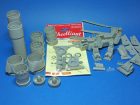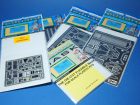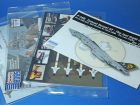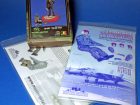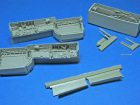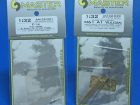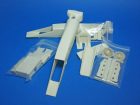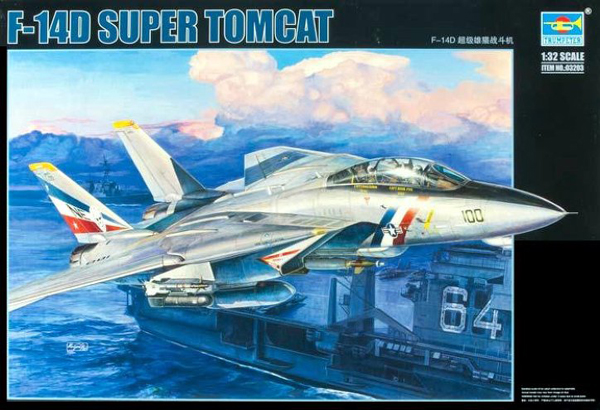
Feature Article by Dave Coward
A note from Geoff…
Happily I have Dave’s completed model here for final photography and so here are a couple of draft pics just to show you how well his project turned out. Hope you like it as much as I do!?

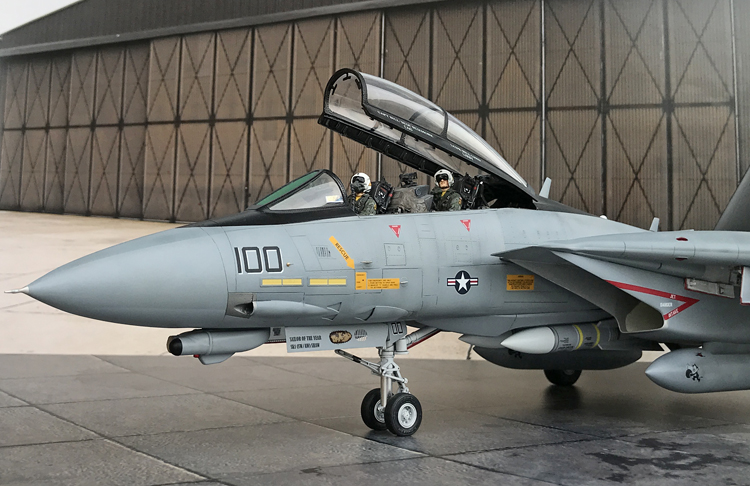
Over to you Dave…
Background
In the late 1980s Grumman started a promotion for the new F-14D when the Navy was to select their future carrier-based fighter. Since Grumman saw still a growing potential for the F-14, they upgraded their 20 years old kitty with quite a range of up-to-date technology. But it was no easy way for the F-14D to find its place in the Navy; a lot of setbacks on the political scene made it hard and often endangered the F-14D production and remanufacturing. Finally, on 23 March 1990 the first production aircraft rolled off the assembly line. But sadly, the last one followed only little more than two years later on 20 July 1992.
The best visible modifications were the engines. The F-14D was powered by two F110-GE-400 engines with 28,200 lbs thrust each. This increased thrust for the new Tomcat meant no afterburners were required for a catapult launch on a carrier; they also improved “behind the boat” flying characteristics and were more fuel efficient. As pilots said, “the F-14D’s new engines finally allowed the pilot to fly the aircraft rather than the engines.” The installation of the new GE engines required only minor changes to the aft fuselage and engine exhaust area.
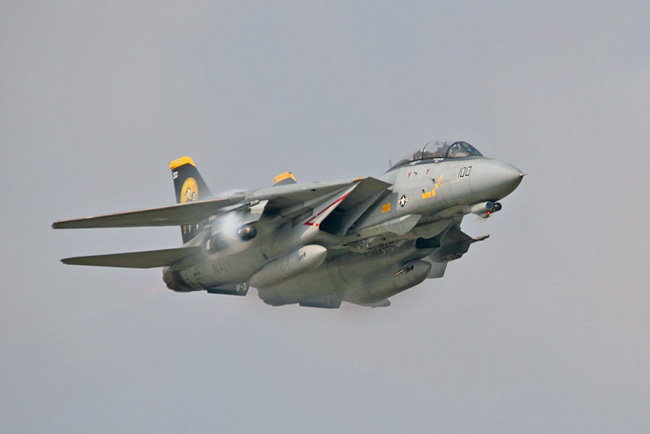
Further improvements were:
The Fatigue/Engine Monitoring System (distributed throughout the aircraft) is a major Repair & Maintenance improvement.
AN/APG-71 Radar, multiple target tracking with twice the previous range. The APG-71 can track up to 24 targets simultaneously and uses digital processing instead of analogue processing as used by the AWG-9.
Joint Tactical Information Distribution System (JTIDS) to secure voice & data communications links between cooperating assets.
ALR-67 Radar Warning Receiver, ALQ-165 Airborne Self-Protection Jammer
ASN-139 Digital Navigation, highly reliable inertial navigation system with enhanced redundancy
Infrared Search & Track (IRST), IR heat sensor passively detects & tracks targets, integrated to provide simultaneous multi-sensor coordination. The IRST is said to be sensible enough to detect even heated surfaces on stealthy aircraft such as the F-22. The combination of the APG-71 radar and the IRST gives the best possible result for target acquisition.
Cockpit: programmable interactive displays & controls, on-board oxygen generating system, NACES ejection seats
Digital Avionics: distributed processing architecture (expandable), two AYK-14 mission computers, four Mil-std-1553 data busses control all major subsystems
TARPS: All F-14Ds have the cockpit displays and wiring for use of the TARPS recce pod.
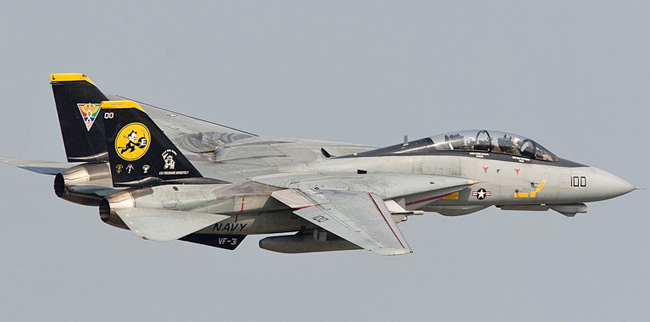
The F-14D met also the Navy’s alert requirement that the aircraft should be able to taxi with functioning systems within five minutes of a cold engine start: The inertial navigation system and the rear cockpit display work within 3 minutes.
Furthermore, the F-14s strike capability was re-awakened. Since the first sketches on the drawing board the F-14 had a strike capability, but back in the early days there was no need for a “Bombcat”. A-6s and A-7s did a good job and the Tomcat could fly as a pure air-superiority fighter with its unbeaten missile capabilities. F-14A/B/Ds had a full strike capability and gained even more competence in this business. LANTIRN equipped Tomcats delivered smart bombs as well as standard iron-bombs with a big bring-back capability. The Tomcat also became night-vision goggle capable and finally enabling it to be a true long-range multi-mission day & night strike-fighter and reconnaissance platform.
But things went different for the F-14D due to financial cut-backs combined with a pro F/A-18E/F lobby in the US government. The procurement number of new build F-14Ds was reduced along with a reduction in the numbers of upgraded F-14A/B. A few days after the F-14D production and remanufacture lines were terminated on 26 February 1991, the US Department of Defence announced that the Navy wanted to develop a new version of the F/A-18 to replace both the F-14 and the aging A-6E and this became the F-18E/F and so ended the reign of the Tomcat.

References used:
M.A.T.S – Grumman F-14 Reference Work
http://www.anft.net/f-14/index.htm
Books:
Grumman F-14 Tomcat Bye-Bye, Baby . . . !
DACO Publications Discovering the Grumman F-14A/B/D Tomcat
Aftermarket Extras:
- Aires F-14D Cockpit Set
- Aires F-14 Undercarriage Bays
- Aires Exhaust Nozzles
- Wheeliants F-14D Weighted Wheels
- Zacto Models F-14 Resin Intakes
- Eduard Colour PE Interior
- Eduard Armament PE set
- Eduard Exterior Set
- Eduard Masks
- Master Pitot tube and AoA indicator
- Master Detail US Navy Pilots
- CrossDelta Decals – F-14D Tomcat Sunset # 2, The last flight of VF-31, VF-31 CAG Bird, NAS Oceana Airshow 2006
- Fighter town decals F-14A/B/D Data Addendum
- Wolfpack Design refuelling Probe set
- F-14 Tomcat TARPS Pod set
